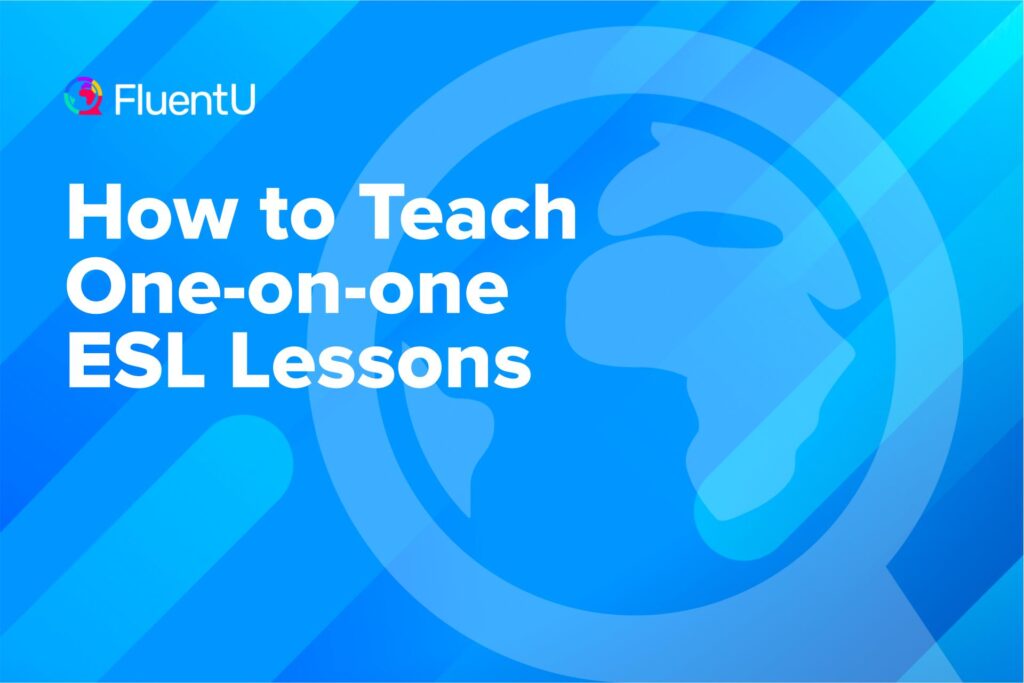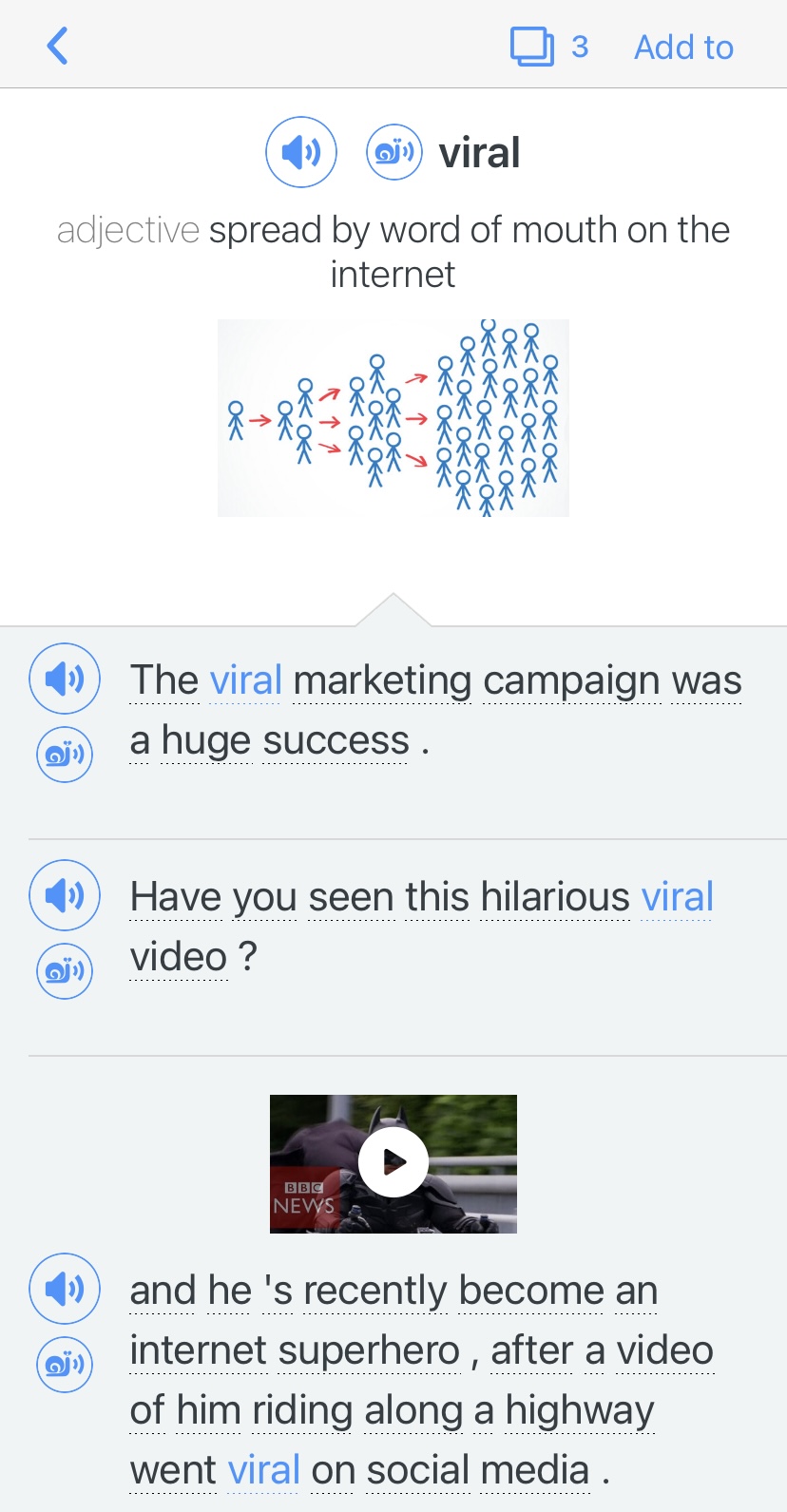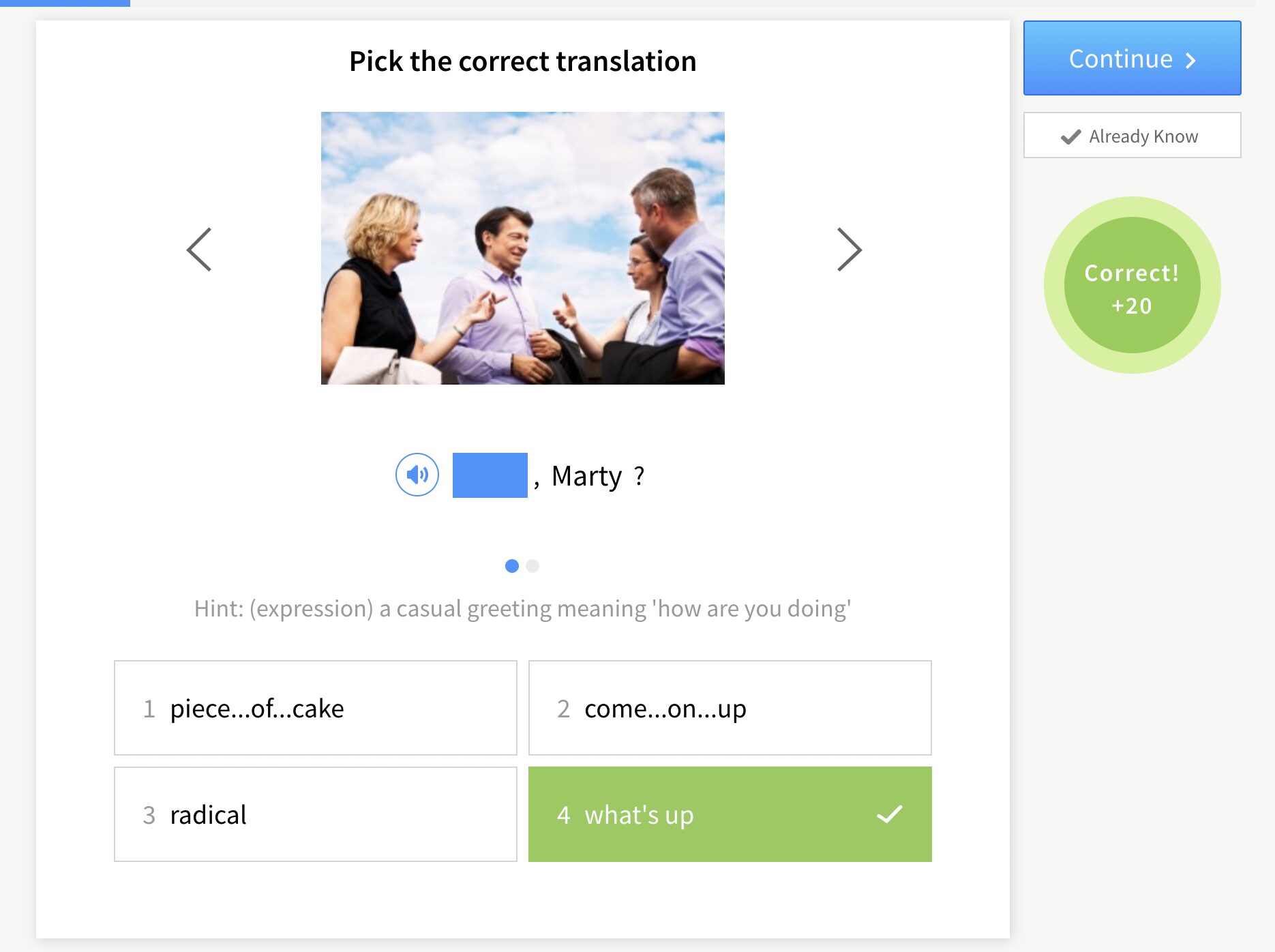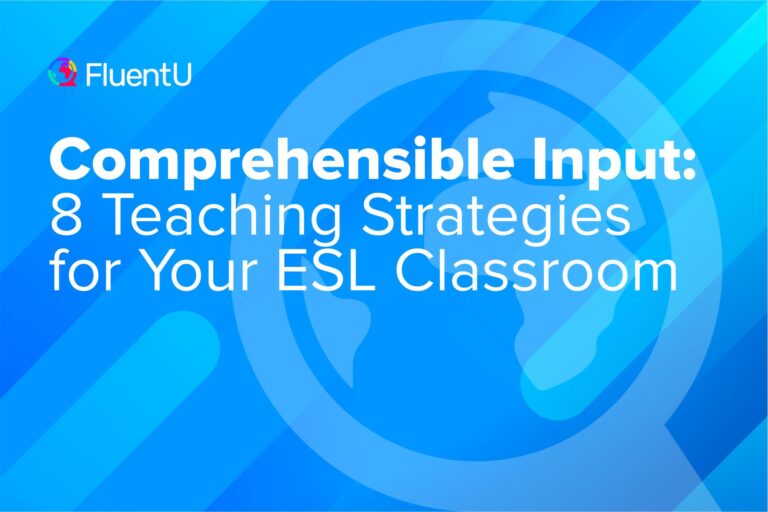How to Teach One-on-one ESL Lessons

Every classroom and every student is different, but there are patterns that make for effective ESL teaching. When it comes to one-on-one lessons, you’ll have to apply the appropriate structure, content, and overall teacher-student dynamic.
That’s exactly where this guide will come in handy. Our team speaks more than ten languages, and we’ve got plenty of language teaching and learning experience between us, ESL teaching included.
Download: This blog post is available as a convenient and portable PDF that you can take anywhere. Click here to get a copy. (Download)
A Brief Introduction to One-on-one Teaching
For starters, one-on-one teaching can fall into two categories: English instruction or English tutoring.
There’s a big difference between the two categories that ESL instructors need to be aware of, especially if the lessons are part of a structured course or English training center.
A tutor’s goal is to get the student to learn on their own—the tutor acts as a guide without providing lectures unless absolutely necessary. A tutor should provide feedback but might not make specific corrections. Instead, they should lead the student to find the correct answer. The officially endorsed approach to tutoring is outlined by the National Tutoring Association.
On the other hand, English instructors are more responsible for learning and building the student’s store of linguistic knowledge. As an instructor, you’ll provide your own detailed lesson plans and content targeted to your student’s learning level and style. You’ll need to explain grammar rules, introduce new vocabulary and actively teach the student new concepts in the English language.
Before getting started, consider which style of one-on-one lessons you’re preparing yourself for.
Either way you go, by reading the following guide, you’ll learn how to avoid major pitfalls, reap the benefits of one-on-one lessons and create a lesson plan that just works.
Let’s start with why one-on-one classes can work better for both students and teachers.
The Advantages of One-on-one Classes
Individual lessons can be beneficial for students and more rewarding for teachers:
- As a teacher, you’ll have a better idea of what the student needs and how to achieve that goal, along with their strengths, weaknesses, and learning style. The student receives more individualized lessons, so they can progress faster.
- Unlike in larger classes, where there are students ahead of and behind the average, one-on-one lessons can match your student’s preferred pace exactly. They won’t feel pressured to keep up, and they’re less likely to become bored.
- It’ll be a lot easier to correct your student’s pronunciation. With group classes, you usually won’t have the time to point out every pronunciation mistake a student makes.
- Students run the risk of imitating their peers’ mistakes in group classes. If they’re in a one-on-one lesson with you, they’ll be consistently exposed to proper grammar and pronunciation.
Although they’re pricier for students, one-on-one classes are actually more effective most of the time than group classes.
How to Overcome the Challenges of One-on-one Classes
One-on-one classes can lead to more rapid learning, but you’ll also have to do more adjusting as the teacher! Regardless of what level your student is at, here’s how you can deliver better one-on-one ESL classes:
Be mindful of tangents
When we teach classes, we typically plan our lessons to incorporate group work. It’s easier for some ESL students to work with their peers than to participate individually, and they’re able to learn from each other. Students with a better grasp of the material are able to assist their peers and help them improve.
All of this cuts down on teacher talk time and allows students to spend more time talking and actively practicing English. Unfortunately, this isn’t something that can be done in a single-student class.
One-on-one classes involve more discussions between the student and teacher, which can also lead to more tangents within the lesson. In some cases, students will steer the class in directions they want, which means you’ll have to steer the class back to its focus to ensure the student learns the target material.
This doesn’t mean that veering off course every now and again is bad for the class. Students might lead you to another topic that needs to be covered, or bring up important questions they have regarding challenging or confusing points. This often helps to ensure that there are no major gaps in learning.
Personalize your lessons
If you haven’t had experience teaching individual students, the first lessons can be some of the hardest. In fact, the first few one-on-one lessons with any new student will present a challenge—even if you’re totally experienced—because each student has their own personality, learning style, interests and educational needs.
As we mentioned earlier, the first step to creating an environment conducive to education is to build rapport with your student. This is just a matter of getting to know your student and what they need to get out of your classes.
Students may have an idea of what they want to learn, but it’s your responsibility to figure out if they’re ready for these subjects. It’s also your responsibility to determine how to best help them reach their language goals.
Earn the trust of your student
In many cases with adult students, you may need to prove your knowledge of English to gain the trust of your student. Since the two of you will be alone, this allows the sole student more opportunities to scrutinize your knowledge and teaching methods. This requires confidence and self-assurance.
Once you’ve earned their trust and proven your merit as a teacher, you can lead the student through the lessons that you know will be most beneficial to them.
Keep the lesson flowing
One of the greatest struggles in a one-on-one class is dealing with silence. It’s not as bad as the awkward silence during a date, but it’s close.
In group classes, you may give students an assignment to work on as you go around and check on progress. You may decide to split everyone into groups and have them work on a project together. You may even go around the classroom and have everyone talking or practicing a certain concept.
It’s much more difficult to tell an individual student to work on something all alone while you check out for a little while. They might think you’re a lazy teacher because they could just as easily do the assignment outside of class, without you being present. Any such assignments will need to be completed in a conversation style with the teacher discussing each answer with the student.
Students in private lessons, particularly adults, want to talk more. They appreciate the value of strong conversational skills. For those who need a little extra push, there are ways to get them to do more talking in class.
There may be times when a student is unresponsive, creating silence in the class. This more often occurs with younger students who are being required by their parents to attend class. It rarely happens with adult students because they tend to be more self-motivated and are probably spending their own money to have class.
When the student remains quiet, it’s up to your creative lessons to generate a response. In these cases, it’s acceptable to give the student an assignment that requires independent reading or writing. It may take time to get a quieter student to open up and discuss topics with you, but using a variety of activities that are fun or specifically geared to the student’s interests should produce results.
Remember that you’re on your own
Another problem that may come up with lower-level students in one-on-one ESL classes is translation. In some group classes, teachers have a local assistant or co-teacher to explain the language in the students’ native tongue. Even without a helper, you’ll often have some more advanced students that can help out their peers along the way.
None of this is possible in one-on-one lessons. Given that language lessons are more effective when the entire class is conducted in the target language, the student will have to really step up their game, and you’ll have to make sure they’re keeping up.
Get clear on tech tools
Some students will rely heavily on bilingual dictionaries and electronic translators. These tools are beneficial for beginners, but they don’t help intermediate or advanced students who may still be clinging to a safety net.
You may also have to teach students how to use their translation resources properly. For example, too many students make the mistake of typing entire sentences into the translator, which generates gibberish. Poor usage will slow down the lesson unnecessarily, and poorly generated translations will only serve to further confuse students.
How to Hold Your First Class with a Student
“You never get a second chance to make a first impression.”
This should be your motto for your first class with a new student. In this very first class, you’re not only meeting a new student but you’re also selling yourself and your services.
Don’t be intimidated! Below is a sample lesson plan that I use when teaching private students both in-person and online for the first time. Feel free to use it as a basis for your own first class:
Start with names and a brief introduction. (5 minutes)
This is an important step and will help you learn more about your student. Don’t forget to ask your student which name they wish to be called, as depending on their background, they may have several or prefer one over the other.
What is your name?
What do you prefer to be called?
Tell me a little bit about yourself.
Ask about their previous English experience. (10 minutes)
Ask your student about their experience with the language. During this time you should be able to roughly determine the level of your student. This is both from their speaking level and the amount of experience they have with the language.
Some possible questions you can ask include:
How many years have you studied English?
Did you learn English at school?
Do you enjoy learning English? Why/why not?
Needs analysis and objectives (5 minutes)
You may now want to analyze the needs of your student. This shows that you’re interested in their progression and will set you up for future classes.
I usually start by asking the students if they have a specific goal related to English.
What are your English goals?
Why are you learning English? (You can prompt the student further by asking about specific goals such as study/work/travel/ personal interest etc.)
Which level would you like to have in half a year? What about after a year?
Strengths and weaknesses (5 minutes)
In this step, you can also assess the level of your students. You can follow up with some additional questions to determine the level of your student.
What do you think are your English strengths?
What about your weaknesses?
Do you feel confident speaking English? Why/why not? (Give a little bit of encouragement here!)
What is one area you’d like to improve the most?
Play some get to know you games and break the ice (25 minutes)
OK, enough of the serious stuff.
You also want to create a relaxed environment and let your student know that it’s not all assessments and questions.
Get-to-know-you games are a great way to break the ice and create a welcoming atmosphere. I’ve also found that this is a stage to search for any common interests and shared passions that you may have. This helps encourage conversation and makes the student feel at ease.
Popular games like “Would You Rather” are a great start as they give you a little insight into your student.
Would you rather holiday on a beach or in the mountains?
Would you rather go to the movies or for a picnic?
Final questions and organization for the next class (10 minutes)
Be sure to ask your student if they have any final questions or would like you to explain something.
Here, you can take the time to re-establish their needs, reiterate your teaching strategy and make plans for the next class.
Good luck!
The Formula for Structuring a One-on-one Lesson
Once you get past the first lesson, further one-on-one ESL lessons can be structured in a similar way as group lessons, but without the group work. Many activities can be adapted for individual students, though there are some that are impossible without additional students (most children’s games are designed for multiple students to encourage social interaction).
While you’ll need to add your own unique flavor to the lessons, and you’ll also need to make adjustments based on the individual student, the following formula will help give you a basis for one-on-one teaching. These are the major steps that should be covered over the course of any class, regardless of length.
- Build rapport
- Get warmed up
- Conversational exercises
- Reading and writing exercises
- Homework
Now, we’ll explore these in further detail.
Build rapport
Usually, a one-on-one lesson won’t begin the same as a group class—instead of jumping right into a warm-up exercise, you’ll want to rebuild your rapport with the student by having a friendly conversation (the content and length of the conversation will vary depending on the student and how often you meet).
The questions you ask during that conversation should lead up to your planned lesson or warm-up exercise.
For example, you may ask about the homework you assigned last time or about a story in the news that’s related to your student’s interests. These conversations are fun for the student and reinforce grammar, vocabulary and pronunciation lessons.
Warm-up exercises
You can now do a warm-up exercise, which could be a review of the previous class or a preview of the current one. Asking the student leading questions about vocabulary or grammar will help the rest of your lesson run more smoothly. Depending on the level of the student, you may incorporate some dictation or other listening exercises.
Going over the last session’s homework is always a good start since they’ve thought through the assignment thoroughly and should be able to start on the same page as you without much preparation. This is a good time to make corrections and cover any lingering questions and areas that were confusing.
Conversation exercises
Because your one-on-one lessons are really just constant conversations, you won’t have to provide too many extra opportunities for your student to speak.
For some students, you might prepare a dialogue—business English students usually want these exercises to focus on their specific career needs. The warm-up exercise will usually involve eliciting information from the student to incorporate in the planned dialogue, such as a situation, vocabulary or verb tense.
The conversation/dialogue exercise can be combined with a reading exercise, but the two can also be entirely separate. When using a reading exercise in a one-on-one ESL class, it’s best to have the student read the material aloud so you can correct pronunciation.
Another option for this is to have the student read the material before class and use it as the basis for a conversation. In the second case, you can ask the student some questions to ensure that they understood the text.
Writing and reading exercises
Writing exercises are the most difficult part to integrate into a one-on-one ESL class. Just like the reading exercise, older students will feel like it’s a waste of time because they could have done it at home, alone. To avoid this common complaint, you can use some short editing exercises or grammar exercises.
When providing grammar exercises, it’s important for the student to write out a complete sentence to get a feel for the overall structure. If you’re teaching a student about the past progressive verb tense, you can provide a few sentences written in simple past or present progressive tenses and ask the student to rewrite the sentences and then read them aloud.
Because you’ve just taught this grammar point to the student, they won’t see it as an exercise that can be done at home. Instead, they’ll understand that you’ve organized things this way to double-check their comprehension of a freshly taught concept.
Homework
Before you finish the lesson, you should give the student some homework. You can then either review it with the student during the session so they can recognize their mistakes, or you can ask the student to email the assignment to you before class so you can correct it beforehand.
For homework material that’s more interactive, FluentU is a language learning platform that features English-language audio and video clips. As a teacher, you can assign videos to your student as homework. Each video comes with a multimedia quiz that tests out speaking, listening comprehension, and other skills. You can then check your student’s progress and then talk about it with them next time.
English Immersion from Your Device
I get it–learning English isn’t always a walk in the park. But it doesn’t have to be a boring, tedious, or hair-pulling experience either. In fact, making it fun is key to your success!
With FluentU, you can learn English naturally by turning any YouTube or Netflix video with subtitles into an interactive language lesson. I’m talking about language immersion from the convenience of your device.
Plus, you can import your favorite YouTube videos into your FluentU account to learn from them using the app or website. Or browse our curated library of videos handpicked for beginners and intermediate learners.
While you watch a video, FluentU’s interactive subtitles let you tap on any word for an instant definition, example sentences, images, and audio. No more pausing and searching for translations—everything you need is right there!
It's all built to help you learn how to use words in real contexts. For example, if I tap on the word "viral," this is what pops up:
Learn even faster with built-in quizzes that reinforce vocab from every video. FluentU tracks your progress, gives you extra practice with tricky words, and reminds you when it’s time to review—so your learning is always personalized and effective.
Try FluentU today on your computer or tablet, or download our app from the App Store or Google Play. Click here to take advantage of our current sale! (Expires at the end of this month.)
How to Become an English Tutor
If you’ve never taught an ESL class before, it’s actually pretty easy to become an English tutor these days, thanks to the internet and global demand for English education. Follow the general steps below to ensure that you’re delivering the highest quality classes and maximizing your teaching potential!
1. Choose your form of one-on-one teaching
There are a few options for becoming a one-on-one English tutor, whether you want to work online or in person. Check some of the most popular options below:
- teach privately in your local are
- work in a language academy
- tutor at the local university
- teach online through a tutoring platform
- teach online through a video streaming program
2. Consider your qualifications
You might be asking, “what qualifications do I need?”
This is one of the most common questions for those who are thinking about getting into English teaching.
Well, depending on the type of ESL classes, you may be required to undertake some assessments. This is especially true for work in an academy or signing up for online platforms. In this case, you may need to hold a TEFL certificate which is the most popular and standard ESL teaching certificate.
If you’re teaching privately or in your local area then this certification may not be required. Some online platforms don’t require a certificate, either. However, without a certificate, the pay scale may be generally lower.
3. Choose your approach and platform
Once you get your qualifications in order, you may be wondering where to begin your one-on-one ESL tutoring journey.
One of the easiest ways to begin is by setting up an account on an online platform such as Cambly or italki, which will connect you with English students. They take care of all of the connections, timetables and other considerations you might have when thinking about teaching online. To know more about iTalki, you can check out a full review here.
Be sure to set up an attractive profile with heaps of personality and to mention your approach to teaching English, which materials you use and whether you speak any additional languages.
If you don’t want to teach through a platform, you can take out local ads offering your services or create a website with your profile and availability.
After this, you can teach through an online platform such as Skype or Zoom. In this case, you may need to do some basic marketing and build a brand (positive comments and recommendations are great) to attract students.
4. Grow your business or student base
This step might be considered optional, depending on your goals as a teacher. You might only have the time or desire to teach a small handful of students. In that case, once you get your group of students, you can enjoy your job and take no further action.
However, if you plan to make teaching your primary source of income, you might want to work on building a larger student base to work with.
There are a few effective ways you can use to grow your business. Here are just a few suggestions:
- Acquire additional qualifications. If you didn’t get a TEFL certificate yet, it might be a good idea to do so now, as it can make you more appealing to potential students.
- Consider specializing in a particular field such as business English or exam preparation.
- Use social media to grow your user base and reach more people.
- Encourage your current students to leave a review for you so that future potential students can see what a great teacher you are!
- Use word of mouth and grow your business organically. You can even offer a discount for your current students for signing up their friends.
- Try paid advertising. If you can afford it, this can be a quick way to get seen by many people in a short period of time.
Once you have some more clout in the tutoring world, you’ll be able to charge a higher rate and take on more students.
One-on-one ESL lessons can even be more beneficial to students and more enjoyable for teachers over time! With the right strategy, you can form a meaningful connection with your student and help them become an incredible English speaker!
Don’t forget to follow the steps above and remember to start small. You’ve got this!
Download: This blog post is available as a convenient and portable PDF that you can take anywhere. Click here to get a copy. (Download)

















